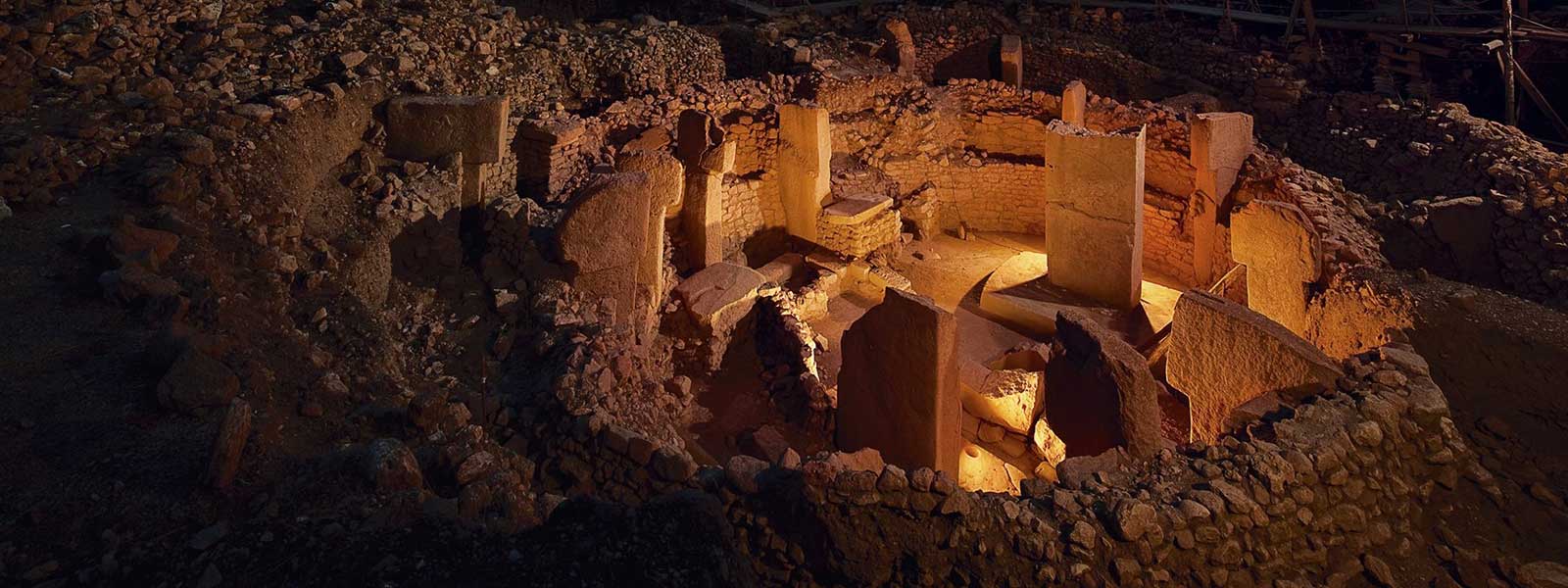
GOBEKLITEPE
How it all began?
It is a general consensus that humanity has undergone three immense transformations throughout history while evolving from a mere hunter-gatherer in Paleolithic age to today's space explorer of the digital age.
For thousands of years ruling vast lands, grandiose palaces, and colossal temples meant power but shortly after the Industrial Revolution, small lands become the dominators over nonindustrial larger areas. And today, yet very raw digital age has already made it possible for young people who are capable of producing billions of dollars’ worth of software to go through the customs which originated in the Industrial Age to control the circulation of economic values without any need to declare any values. How did this happen?
The supreme transformation started in the Neolithic Age. The survival of nomadic hunter-gatherers in the Paleolithic Age depended on the amount of food they could find while trying to avoid natural disasters and/or wild animals. These small groups of people started settling down as agriculture commenced and became widespread which led to a rise in the population. Family and social life, religion and sexual hierarchy transformed in time and new concepts like possession of goods, wealth and inheritance and new social classes like craftsmanship and clergy were created. Besides daily life improvements, humans developed abstract thinking that resulted in simple art first and eventually the man was able to erect magnificent temples for his gods.
At least this was what a researcher would find in the books and articles about Neolithic Age until 15-20 years ago as the most popular idea until a German archaeologist, Klaus Schmidt discovered this amazing site within 18 km distance of Sanliurfa in Turkey which is one of the renowned mystic cities of human history. The world was dazzled with this surprising discovery because Gobeklitepe was not only the earliest sanctuary on Earth; it was the oldest architectural monument too. It was dated to 10.000 BC to Pre-pottery Neolithic Age miraculously predating the earliest settlements in Mesopotamia by 5000 years, Stonehenge in England 7000 years, Egyptian Pyramids 7.500 years and Ggantija Temples in Malta 6.500 years. This fact indicates that humans had already achieved an unexpected level of imagination and complex thinking at a time they were thought to be simple hunter-gatherers without any sign of agriculture yet. Gobeklitepe is a contemporary of neighboring Nevali Cori, Kortik Tepe, Hallan Cemi ve Cayonu historic sites which were also early hints of small villages in the pre-agricultural stage.
The Temples
Until now a total of 20 temples has been discovered in the excavations, by geomagnetic and geo-radar surveys. The circular and oval open-air temples are nearly 30 m. in diameter with two anthropomorphized T-shaped large monoliths facing each other in the center that is nearly 6 m. tall and weigh up to 16 tons. It is thought that they symbolize man and woman and some reliefs similar to Egyptian hieroglyphs might represent the ultimate union of the sun and the Moon during a solar eclipse.
These central figures are encircled by ten or twelve smaller monoliths which are also thought to symbolize human beings. The number 12 has been a significant symbol in many cultures for ages: the 12 constellations of the Zodiac, 12 months of a year, 12 deities of the Hittites, 12 apostles, 12 Imams of the Shia… What it might have meant for its people ages ago is a tempting enigma that will keep us busy for a long time.
Besides stylized human figures, the craftsmanship numerous decorative motifs like bulls, lions, snakes, crane, wild boar, foxes, scorpions, and deer are depicted suggests mature artistic skills and great dexterity. The path to attaining such an artistic and architectural level of expression must have had an unknown course of the development process that we cannot quite conceive.
The ground of the temples was insulated by terrazzo technique, therefore it is obvious that the site was used for libations; most probably carried out with water and/or blood or ironically enough, with beer. DNA investigations have shown that a nearby town, Karacadag might be the possible motherland of the domesticated grain and it is recently verified that people of Neolithic Age had managed to ferment the grains and produce beer before learning how to make bread. Do you think we might have initiated civilization by settling down one day in the far past just for the sake of beer?
Surprises do not seem to have an end here; it is now known that the extremely heavy monoliths were carried to the site from a 2 km. far quarry. Supposedly millennia before, the wheel was invented! And all that work was deliberately shut down due to unknown reasons and earthed after being used a couple of thousands of years. This, however, is the prime reason why the sanctuary was preserved perfectly well until today and therefore was granted to be on the World Heritage Tentative List in 2011.
Monumental architecture and the extraordinary symbolism which was intended to be passed on to the next generations by the builders together with the technical proficiency provide very important information about the necessary social structure, organization and coordination skills behind it that make us reconsider the conventional theories about Neolithic Age.
What we learned so far at and about Gobeklitepe about the deep past of mankind is inevitably urging us to reevaluate and perhaps rewrite the history. Anatolia, who has overturned all known facts about our past with each and every excavation throughout the years, again claimed her well-deserved leading role in the world human history.
